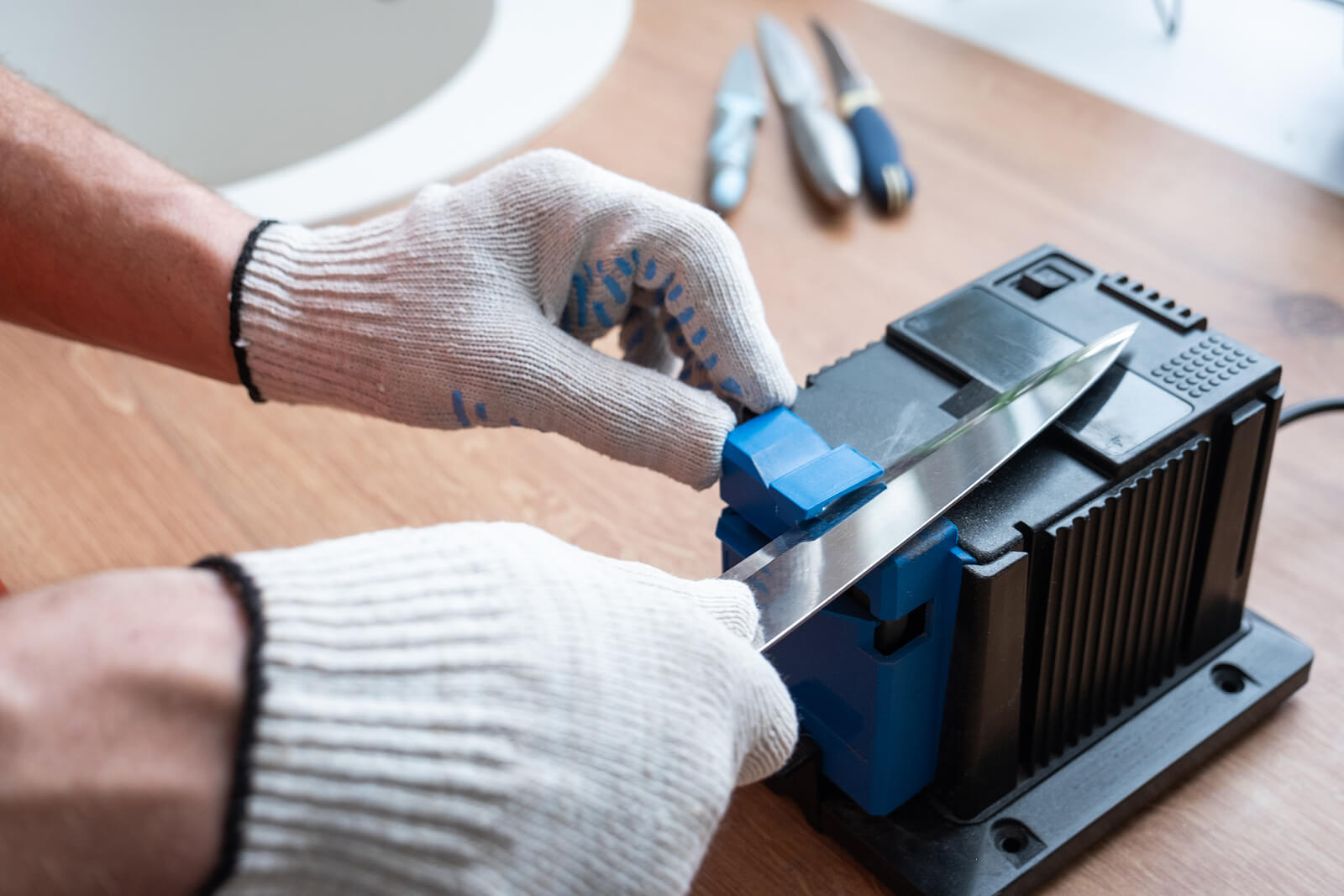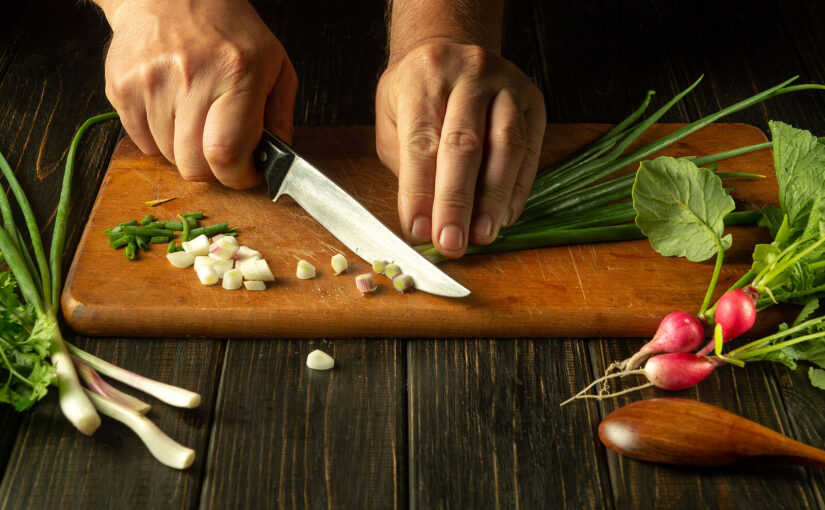As with many kitchen utensils, kitchen knives can wear down and become less effective over time — prompting the need for replacement.
However, when the time comes to part ways with these sharp and potentially dangerous tools, questions about proper and legal disposal often arise.
Let’s cut through the mystery, explore various methods for safely disposing of kitchen knives, and discover exciting possibilities for their reuse, upcycling, and recycling.
How to safely dispose of kitchen knives in the UK
You have several choices when it comes to disposing of kitchen knives.
Recycling knives
Whether you’re an individual or a business looking to dispose of kitchen knives responsibly, safe and eco-friendly methods are available.
For mixed-material knives featuring metal blades and plastic handles, placing them in your general waste bin is an option, but safety precautions are essential.
To prevent accidents, follow these steps:
- Take a sturdy piece of cardboard that matches the length of the blade and wrap it around the blade, ensuring complete coverage — especially over the tip. If the tip protrudes, push a cork onto it.
- Seal the cardboard cover with robust tape so it doesn’t move.
- Place the securely wrapped knife inside a padded envelope or encase it in bubble wrap for added protection.
For an extra layer of security, consider putting the wrapped knife in a large plastic or metal container for disposal. Label the box if possible and place it at the top of your wheelie bin to inform the waste management team about its contents.
Recycling is a more sustainable choice if your kitchen knife is entirely made of metal.
Take it to your local recycling centre and deposit it in the scrap metal bin. You could even sell it to a scrap metal dealer if you have multiple knives or other items to dispose of.
In both cases, the knives will be melted down and transformed into new metal products, reducing waste and contributing to the circular economy.
Donating knives
In your quest to responsibly dispose of kitchen knives, charity shops offering kitchenware can be a viable option. However, reaching out to them beforehand is crucial to confirm their knife donation policy.
Here’s the recommended process:
- Contact the charity shop: Get in touch with your local charity shop to find out if they accept kitchen knife donations. If they do, proceed with the following steps.
- Clean and prepare: Before donating, ensure your knife is clean and adequately wrapped or packaged — following the same guidelines as when disposing of a knife in a general waste bin.
- In-person delivery: Plan a direct visit to the charity shop, avoiding additional errands. Hand over your donation in person, indicating it’s a kitchen knife.
Alternatively, consider these other disposal options:
- Knife amnesty bin: Some police stations host knife amnesty bins where you can anonymously and safely drop off knives and offensive weapons, no questions asked.
- Online sale: If you’d prefer to sell or give away your unwanted knives online for collection, ensure that the recipient is 18 years or older, in compliance with UK law.
Exploring these various avenues allows you to responsibly part ways with your kitchen knives, promoting safety and sustainability.
How to sharpen a kitchen knife

A significant number of kitchen knives end up discarded due to dullness. It’s essential to recognise that all knives lose their sharp edge and can be rejuvenated to their former sharpness with little effort.
Let’s explore how to breathe new life into a kitchen knife, give it a second chance at usefulness, and prevent it from meeting an untimely end in the bin.
Whetstones
Whetstones, also known as sharpening stones, reign supreme when sharpening your knives. They offer a versatile range of grits to cater to the specific needs of your knives.
To achieve the best results, following the instructions provided with your stone is essential.
Let’s explore the various grit options and their applications:
- 100-250 grit whetstones: These are the coarsest whetstones available, ideal for severely blunt knives or those with chips. They remove material from the blade, making them suitable for all repair work.
- 300-500 grit whetstones: Opt for an abrasive 300-500 grit whetstone for a quick revival of a dull knife. It’s perfect for returning the edge to knives that have lost their sharpness.
- 1000 grit whetstones: If your knife is dull and not severely damaged, a 1000 grit whetstone is an excellent choice. It’s suitable for a wide range of knives.
- 2000 grit whetstones: Ideal for daily sharpening, a 2000 grit whetstone offers precision. It takes longer than a 1000 grit but is perfect for maintaining a sharp edge.
- 3000 grit whetstones: Specifically designed for boning knives, a 3000 grit whetstone ensures a sharp and precise edge, making it indispensable for those who frequently work with them.
- 5000 grit whetstones: These fine whetstones are best paired with Western knives, providing a smooth and refined edge.
- 6000 grit whetstones: A 6000 grit whetstone is a great choice when adding the finishing touches. It elevates the sharpness and polish of your knives.
- 8000 grit whetstones: For chef’s knives that demand perfection, an 8000 grit whetstone is your go-to choice. It offers an impeccable sharpness and polish.
Each whetstone grit serves a unique purpose, ensuring your knives can always be maintained, sharpened, and polished to perfection. Choose the one that best suits your specific knife and sharpening needs.
Knife-sharpening steels
Knife-sharpening steels are most effective as a maintenance tool to keep sharp knives in peak condition. They excel as a preventive measure, ensuring your knives never lose their edge.
However, if you find yourself with a dull knife, certain steels can help restore their sharpness. Consider these options:
- Diamond steel: If you’re dealing with the dullest of knives, a diamond steel with a robust, diamond-embedded blade is your best bet. Its abrasive surface can rejuvenate even the bluntest blades.
- Ceramic steel: A ceramic steel is an excellent choice for knives that have dulled but are not severely blunt. It provides the right amount of abrasion to bring back the edge.
Incorporating sharpening steels into your knife maintenance routine ensures that your blades stay sharp, making them a valuable addition to your kitchen arsenal.
Manual and electric knife sharpeners
If you lack confidence in using whetstones and steels or have a tight schedule, manual or electric knife sharpeners can be your dependable allies for a swift and effective sharpening process.
Knife sharpeners come in various designs, with some offering a single slot for sharpening. In contrast, others provide the convenience of two slots: one for the sharpening stage and another for honing.
These versatile options cater to your specific sharpening needs, ensuring your knives are in top-notch condition with minimal effort.

Great article! Safety is paramount, and knowing the proper way to dispose of knives is crucial. This information is not only practical but also promotes responsible handling and disposal. It’s essential to create awareness about these procedures to ensure the safety of both individuals and waste management personnel. Well done on sharing valuable insights on this important topic!
As we prepare to move house, I have found in a pile of “forgotten” stuff, a flick knife which I remember buying on my first trip to Spain in the early 60’s, when I was no more than 14. I believe I can hand it in to a local police station. I certainly don’t need it or want it.
Advice please.
Colin
Hi Colin, I’d give your local police station a call and check.
Yet another p/w to remember